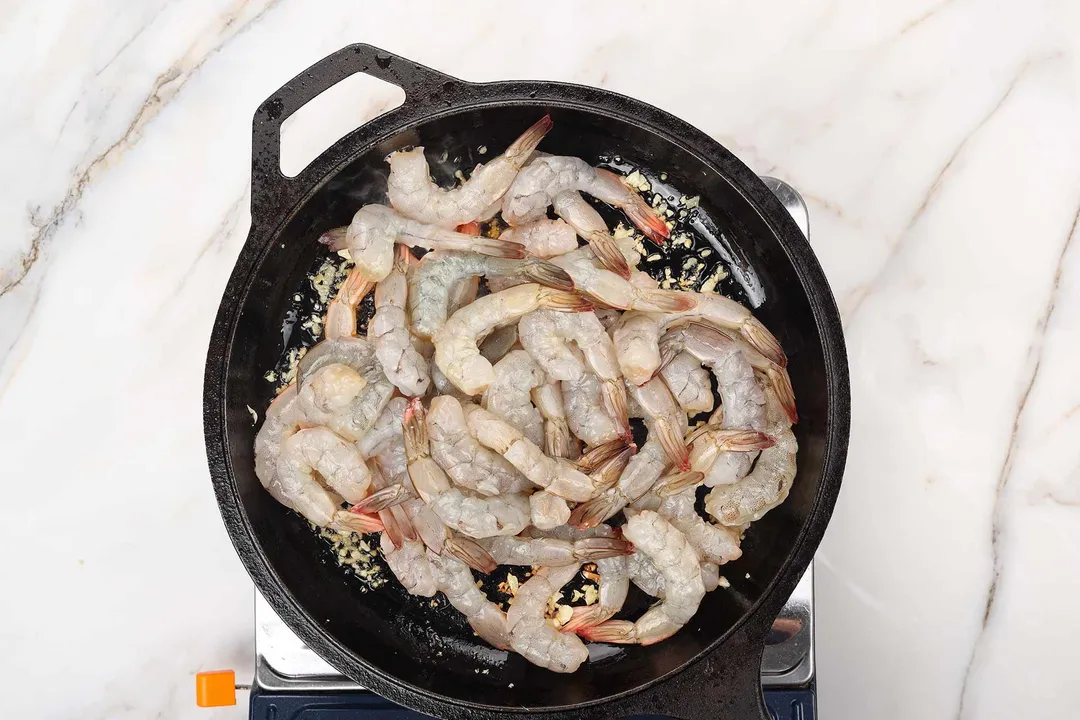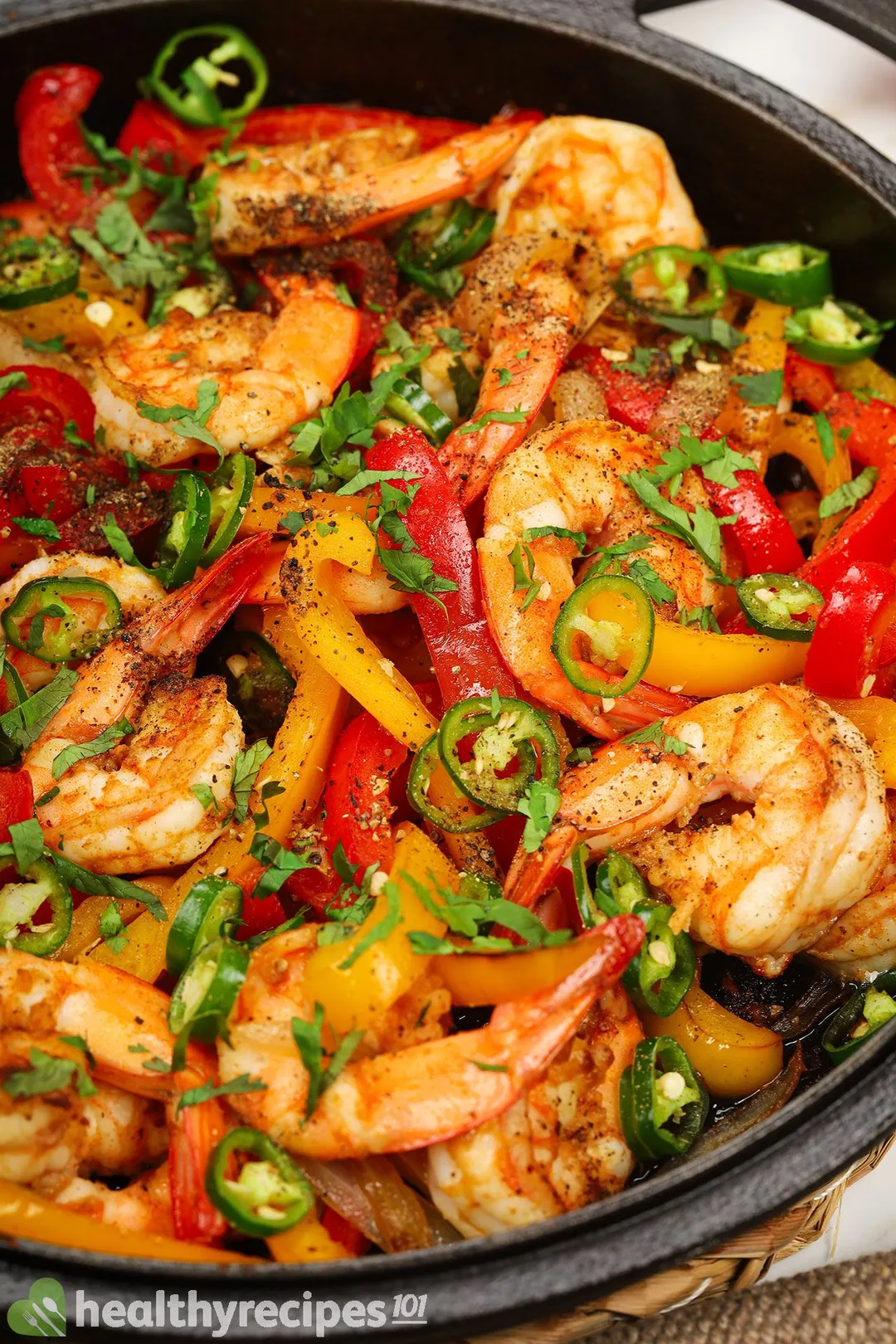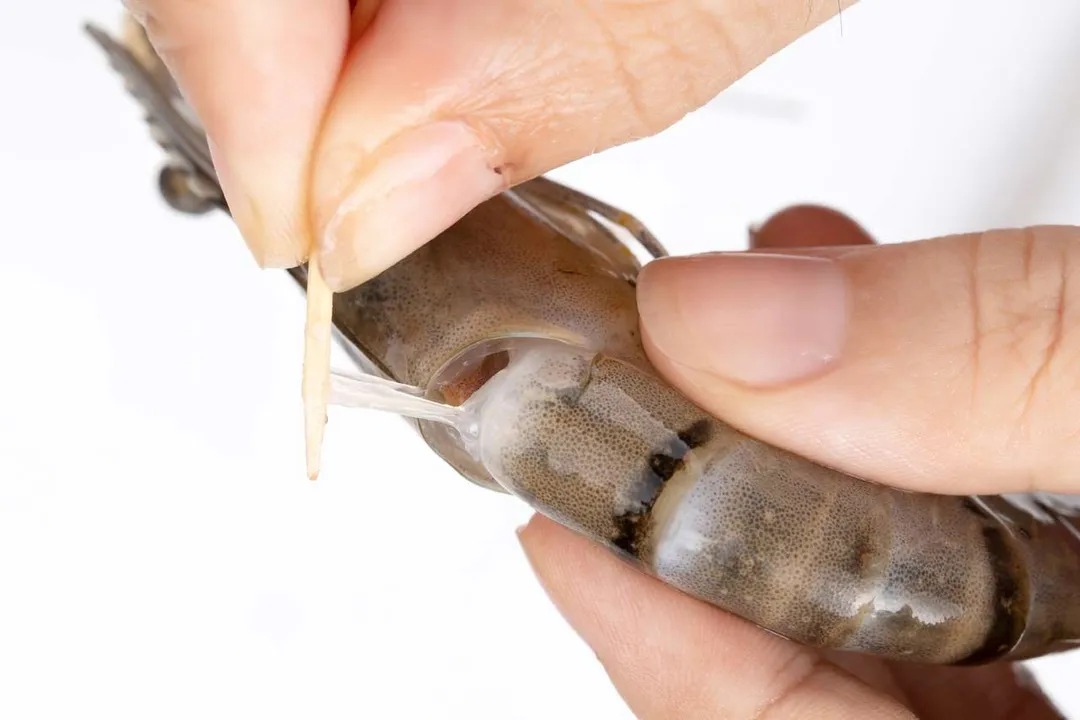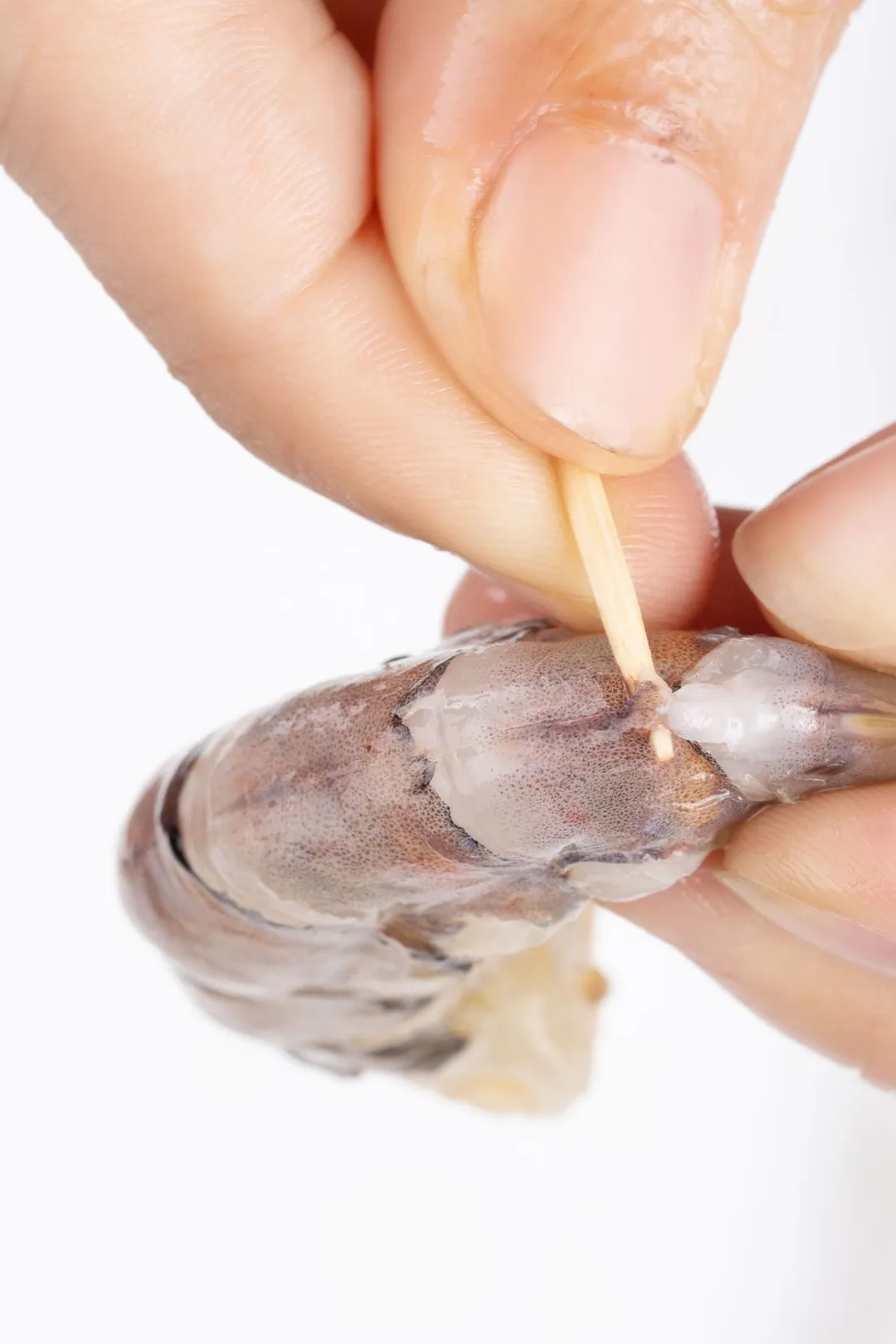Today's article is mainly about learning how to saute shrimp, but this cooking technique can also be used for sauteing other seafood, such as squid and scallops, or various other types of food.
Before we start on the shrimp, let's take a look at what sauteing actually is.
What is Sauteing?
Sauteing, or "sautéing", is a cooking method that originated in France.
This technique involves browning the food over high heat, which gives it a beautifully charred, golden-brown color. To achieve this, you will need to cook your food in a small amount of oil or fat with a high smoke point.
Smoke point is the temperature at which the oil or fat starts to smoke and sometimes develops an odd flavor. This can affect the quality of the food, so you need to pay attention and pick the right oil.
You can saute food with oils such as canola, sunflower and peanut oil. Sesame oil would be the perfect choice for Chinese or East Asian-inspired recipes.
Another key point to keep in mind while sauteing is to use a shallow pan that can comfortably accommodate the food. You may need to divide and cook it in batches if there is a large quantity that needs to be sauteed. It's important to avoid overcrowding the pan if you want food browned to perfection.
Food releases moisture when it is put into the pan, so make sure the pan is hot enough before you start cooking. This ensures the moisture evaporates quickly, and the food starts browning.
Too much food in the pan will lower the temperature of the pan, and release a large amount of moisture. This can result in the food cooking in its own juices, instead of being sauteed.
Now that you've grasped the basics of this cooking technique, let's learn how to saute shrimp.
How to Saute Shrimp on the Stove

Before cooking the shrimp, you will need to do some preparation:
- Thaw the shrimp: If you're using frozen shrimp, we recommend defrosting it ahead of time.
- Peel and devein the shrimp: If you plan to use whole shrimp, it's best to remove the shell and the black vein that runs down its back. You can leave the tail on for better presentation, but it can get a bit messy to peel while eating.
- Make sure the shrimp are dry: The shrimp need to be dry to achieve the charred, golden-brown look. Pat them with paper towels to remove excess moisture.
- Season the shrimp with just salt: Put the shrimp in a mixing bowl and toss them with your favorite choice of salt. Other spices like black pepper, garlic powder, and red pepper flakes can burn easily when sauteed over high heat, so it’s best to wait until the shrimp is cooked before sprinkling other seasonings on top.
You need a non-stick pan to cook and a fish spatula to help you turn the shrimp quickly.
Here is how to saute shrimp on the stove:
- Add some high-smoke-point oil or fat to a pan, and set it on the burner over high heat.
- Once the oil is hot enough, add shrimp to the pan.
- Cook for about 1 to 2 minutes per side.
- Once both sides are cooked, transfer to a plate and serve.
Tips for Sauteing
Make sure you check the temperature of oil or fat before cooking. When you see the surface of the oil start shimmering like ripples on a lake, it’s ready to cook.
Another way to check the temperature is by gently placing the tip of a dry wooden spoon into the hot oil. You know it’s ready when you see tiny bubbles forming around the spoon.
We often use garlic powder to spice up sauteed shrimp, but it's fine to use freshly chopped garlic as well. However, fresh garlic tends to burn quickly over high heat; you may need to cook it separately.
We recommend sauteing the garlic in hot oil over medium heat. Once the garlic is soft and starts to turn golden, pour the garlic and oil into a sieve over a heat-proof bowl. You can use the infused oil for cooking the shrimp, and save the garlic for garnish.
We will use the same pan to saute the shrimp, so ensure you scrape the pan thoroughly with a spatula and leave no speck of garlic behind.
If there are leftover bits of garlic in the pan, they will burn when you cook the shrimp, imparting an unpleasant, bitter taste in the shrimp.

How Long to Saute Shrimp For?
The cooking time varies, depending on the size of the shrimp. For sauteing, it is better to use medium to extra-large shrimp.
Since sauteing involves cooking over relatively high heat, the shrimp would only take 1 to 2 minutes to cook per side.
Pay close attention to the change in color. As the shrimp start to turn white and opaque, flip immediately and cook the other side.
Once it’s cooked, make sure to remove the shrimp from the heat and transfer them to a bowl or plate. Leaving the shrimp in the hot pan can result in overcooked shrimp.
How Do You Know When Sauteed Shrimp Is Done?
A common indicator of cooked shrimp is the change in color.
Depending on the type of shrimp, the color can vary from blueish gray to pinkish orange. One thing that all raw shrimp have in common is their slightly translucent appearance.
When cooking shrimp, you will notice how it gradually changes to a more opaque look from its signature white and bright orange color. That's how you can tell your sauteed shrimp is done.
Another way to make sure the shrimp is done is by checking its internal temperature. Use a food thermometer and pierce it through the thickness part of the shrimp. As suggested by the USDA food safety guidelines, the internal temperature of shrimp should be at least 145° F.
Luna Regina
Writer, Author

